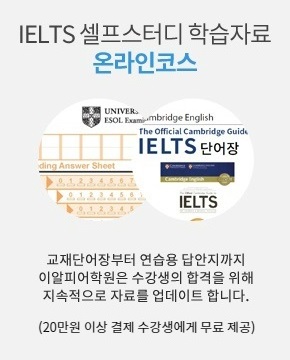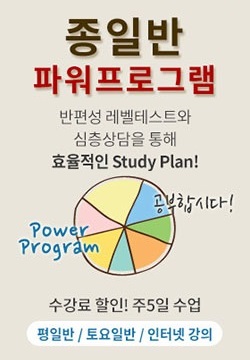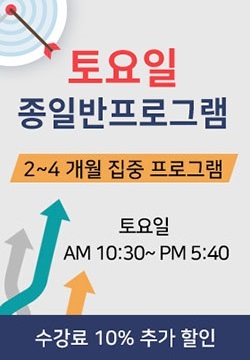| Band score |
Skill level | Description |
| 9 | Expert user | 적절하고 정확한 영어를 유창하게 구사하며 충분한 이해를 갖춘 응시자임을 나타냅니다. |
| 8 | Very good user | 간혹 부정확하고 비적절한 어휘나 표현을 쓰고 익숙하지 못한 상황에서는 가끔 잘못 이해하는 경우가 있기는 하지만 대체적으로 언어구사능력이 뛰어나고 복잡하고 전문적인 토론을 잘 이끌어 갈 수 있는 응시자임을 나타냅니다. |
| 7 | Good user | 때로 부정확하거나 비적절한 언어를 구사하고 일부 상황에 대한 이해를 못하는 경우도 있지만 전체적으로 난이도가 높은 언어를 잘 구사하고 자세한 내용의 이해가 가능한 응시자임을 나타냅니다. |
| 6 | Competent user | 부정확하고 부적절한표현을 사용하거나 익숙하지 못한 상황에서는 잘못 이해하는 경우가 있지만 복잡한 언어, 특히 친숙한 상황에서는 상당히 잘 구사할 수 있는 전체적으로 효과적인 정도의 언어의 구사가 가능한 응시자임을 나타냅니다. |
| 5 | Modest user | 대부분의 상황에서 실수를 하긴 하지만 전체적인 의미는 파악할 수 있고 부분적인 언어 구사력을 지니고 있는 응시자로 특히 자신의 분야에서 기본적인 의사소통은 가능한 응시자임을 나타냅니다. |
| 4 | Limited user | 익숙한 몇 가지 상황에서만 언어구사가 가능하고 내용의 이해나 표현에 있어서 오해가 잦고 복잡하고 어려운 어휘를 사용하지 못하는 응시자임을 나타냅니다. |
| 3 | Extremely limited user | 아주 익숙하고 단순한 상황에서 의미의 전달 혹은 이해만이 가능한 경우이며 의사소통이 중단되는 경우가 많은 응시자임을 나타냅니다. |
| 2 | Intermittent user | 단어만을 사용하여 가장 기본적인 의사소통만이 가능하고 Spoken English와 Written English의 이해가 어려운 응시자임을 나타냅니다. |
| 1 | Non-user | 사실상 언어 구사력이 전혀 없다고 판단되는 응시자임을 나타냅니다. |
| 0 | Did not attempt the test | 시험에 응시하지 않은 경우입니다. |
Calculating the overall band score
A score is given for each test component – Listening, Reading, Writing and Speaking. These individual scores are then averaged and rounded to produce an overall band score.
IELTS scoring in detail
IELTS Academic and General Training versions are marked using the same 9-band scale
Calculating the overall band score
IELTS test takers receive a Test Report Form setting out their overall band score and their scores on each of the four components: Listening, Reading, Writing and Speaking. Each of the component scores is weighted equally.
The overall band score is calculated by taking the average of the total of the four individual component scores.
Overall band scores are reported to the nearest whole or half band.
0.25 는 0.5 로, 0.75 는 1.0 으로 반올림을 해줍니다. 성적표에는 0.5 단위로 점수가 기재 됩니다.
Some examples:
| Listening | Reading | Writing | Speaking | Average score* | Band score | |
|---|---|---|---|---|---|---|
| Test taker A | 9.0 | 9.0 | 9.0 | 9.0 | 9.0 | 9.0 |
| Test taker B | 9.0 | 8.0 | 8.0 | 8.0 | 8.25 | 8.5 |
| Test taker B | 8.5 | 8.5 | 7.0 | 7.0 | 7.75 | 8.0 |
| Test taker C | 8.5 | 7.0 | 7.0 | 7.0 | 7.38 | 7.5 |
| Test taker D | 7.0 | 7.0 | 6.5 | 6.5 | 6.75 | 7.0 |
| Test taker E | 7.0 | 7.0 | 6.0 | 6.0 | 6.50 | 6.5 |
| Test taker F | 7.0 | 6.5 | 6.5 | 6.5 | 6.63 | 6.5 |
| Test taker G | 7.0 | 6.0 | 6.0 | 6.0 | 6.25 | 6.5 |
| Test taker H | 6.5 | 6.5 | 6.5 | 6.0 | 6.38 | 6.5 |
| Test taker I | 6.0 | 6.0 | 5.5 | 5.5 | 5.75 | 6.0 |
| Test taker J | 6.0 | 5.5 | 5.5 | 5.5 | 5.63 | 5.5 |
| Test taker K | 6.0 | 6.0 | 5.0 | 5.0 | 5.50 | 5.5 |
| Test taker L | 6.0 | 5.0 | 5.0 | 5.0 | 5.25 | 5.5 |
| Test taker M | 5.0 | 4.0 | 4.0 | 4.0 | 4.25 | 4.5 |
| Test taker N | 4.5 | 4.5 | 4.0 | 4.0 | 4.25 | 4.5 |
*Average score = total of the four individual component scores divided by four.
Calculating the component band scores
| IELTS scoring summary | |||||||||||
|---|---|---|---|---|---|---|---|---|---|---|---|
| Listening The IELTS Listening test contains 40 questions. Each correct item is awarded one mark. Band scores, ranging from Band 1 to Band 9, are awarded to test takers on the basis of their raw scores. |
Reading The IELTS Reading test contains 40 questions. Each correct item is awarded one mark. Band scores, ranging from Band 1 to Band 9, are awarded to test takers on the basis of their raw scores. |
Writing Examiners use detailed assessment criteria (known as 'band descriptors') to award a band score for each of the four assessment criteria:
|
Speaking Examiners use detailed assessment criteria (known as 'band descriptors') to award a band for each of the four assessment criteria:
|
||||||||
| Differences between IELTS Academic and General Training: There is no difference. This is because the more socially oriented language skills of listening and speaking are equally important in an academic study or workplace context. |
Differences between IELTS Academic and General Training: The Reading component of IELTS Academic and General Training is differentiated* by:
*This is because the distinction between ‘academic’ and ‘general’ literacy has usually been seen as most marked in reading and writing skills. |
Differences between IELTS Academic and General Training:
*This is because the distinction between ‘academic’ and ‘general’ literacy has usually been seen as most marked in reading and writing skills. |
Differences between IELTS Academic and General Training: There is no difference. This is because the more socially oriented language skills of listening and speaking are equally important in an academic study or workplace context. |
||||||||
| Band score boundaries Although all IELTS test materials are pretested and standards fixed before being released as live tests, there are inevitably minor differences in the difficulty level across tests. To equate different test versions, the band score boundaries are set so that all test takers' results relate to the same scale of achievement. This means, for example, that the Band 6 boundary may be set at a slightly different raw score across individual test versions. |
|||||||||||
Scoring: Listening and Reading
IELTS Listening and Reading papers contain 40 items and each correct item is awarded one mark; the maximum raw score a test taker can achieve on a paper is 40. Band scores ranging from Band 1 to Band 9 are awarded to test takers on the basis of their raw scores.
The tables below indicate the mean raw scores achieved by test takers at various levels in each of the Listening, Academic Reading and General Training Reading tests. They provide an indication of the number of marks required to achieve a particular band score.
| Listening | |
|---|---|
| Band score | Raw score out of 40 |
| 5 | 16 |
| 6 | 23 |
| 7 | 30 |
| 8 | 35 |
| Academic Reading | |
|---|---|
| Band score | Raw score out of 40 |
| 5 | 15 |
| 6 | 23 |
| 7 | 30 |
| 8 | 35 |
| General Training Reading | |
|---|---|
| Band score | Raw score out of 40 |
| 4 | 15 |
| 5 | 23 |
| 6 | 30 |
| 7 | 34 |
The Academic and General Training papers are graded to the same scale. The distinction between the two modules is one of genre or discourse type. Academic papers may contain source texts featuring more difficult vocabulary or greater complexity of style. It is usual that, to secure a given band score, a greater number of questions must be answered correctly on a General Training Reading paper.
Details Score Conversion Table:
This table is a general guide only. Sometimes the scores are adjusted slightly depending on the difficulty level of a test.
| Band Score | 9.0 | 8.5 | 8.0 | 7.5 | 7.0 | 6.5 | 6.0 | 5.5 | 5.0 | 4.5 | 4.0 | 3.0 | 2.0 | 1.0 |
|---|---|---|---|---|---|---|---|---|---|---|---|---|---|---|
| Listening raw score (A & GT) |
39 ~40 |
37 ~38 |
35 ~36 |
33 ~34 |
30 ~32 |
27 ~29 |
23 ~26 |
20 ~22 |
16 ~19 |
13 ~15 |
9 ~12 |
5 ~8 |
3 ~4 |
1 ~2 |
| Reading raw score (Academic) |
39 ~40 |
37 ~38 |
35 ~36 |
33 ~34 |
30 ~32 |
27 ~29 |
23 ~26 |
19 ~22 |
15 ~18 |
12 ~14 |
9 ~11 |
5 ~8 |
3 ~4 |
1 ~2 |
| Reading raw score (GT) |
39 ~40 |
38 | 37 | 36 | 34 ~35 |
32 ~33 |
30 ~31 |
27 ~29 |
23 ~26 |
19 ~22 |
15 ~18 |
12 ~14 |
8 ~11 |
4~7 |
Scoring: Writing and Speaking
The Writing Test (both Academic and General Training) is marked on the following areas: Task Achievement (for Task 1), Task Response (for Task 2), Coherence and Cohesion, Lexical Resource, Grammatical Range and Accuracy. Examiners give a Band Score for each of these criteria, which are equally weighted.
For the Speaking Test, a Band Score is given for each of the following which are equally weighted: Fluency and Coherence, Lexical Resource, Grammatical Range and Pronunciation.
When marking the Writing and Speaking components, examiners use detailed performance descriptors which describe written and spoken performance at each of the 9 IELTS bands.
| Writing | |
|---|---|
| Criterion | Weighting |
| Task achievement (Task 1)/Task response (Task 2) | 25% |
| Coherence and cohesion | 25% |
| Lexical resource | 25% |
| Grammatical range and accuracy | 25% |
| Speaking | |
|---|---|
| Criterion | Weighting |
| Fluency and coherence | 25% |
| Lexical resource | 25% |
| Grammatical range and accuracy | 25% |
| Pronunciation | 25% |
Overall band scores are reported to the nearest whole or half band. The following rounding convention applies; if the average across the four skills ends in .25, it is rounded up to the next half band, and if it ends in .75, it is rounded up to the next whole band.
Thus, a test taker achieving 6.5 for Listening, 6.5 for Reading, 5.0 for Writing and 7.0 for Speaking would be awarded an overall band score of 6.5 (25 ÷ 4 = 6.25 = Band 6.5).
Likewise, a test taker achieving 4.0 for Listening, 3.5 for Reading, 4.0 for Writing and 4.0 for Speaking would be awarded an overall band score of 4.0 (15.5 ÷ 4 = 3.875 = Band 4.0).
On the other hand, a test taker achieving 6.5 for Listening, 6.5 for Reading, 5.5 for Writing and 6.0 for Speaking would be awarded band 6 (24.5 ÷ 4 = 6.125 = Band 6).
If you do the practice tests under exam conditions, you need to score approximately 20 marks on both the Reading and Listening Test for a Band Score of around 5.5. To achieve a Band Score of 7, you need approximately 30 marks on Reading and Listening.
· Download Writing task 1 assessment criteria (PDF,124KB)
· Download Writing task 2 assessment criteria (PDF, 68KB)
· Download Speaking assessment criteria (PDF, 120KB)



 전체메뉴
전체메뉴










